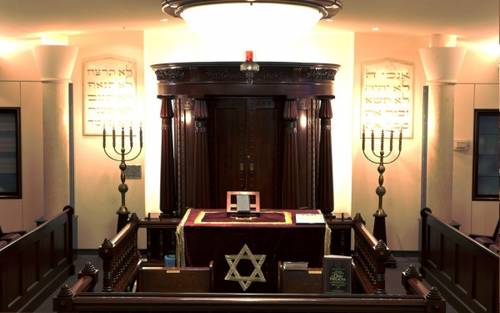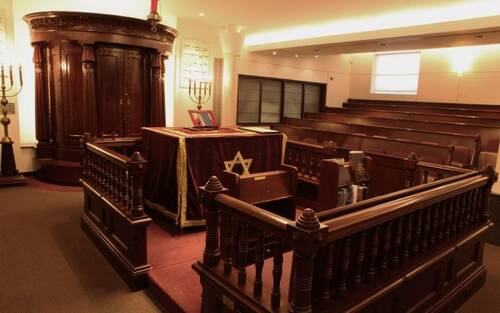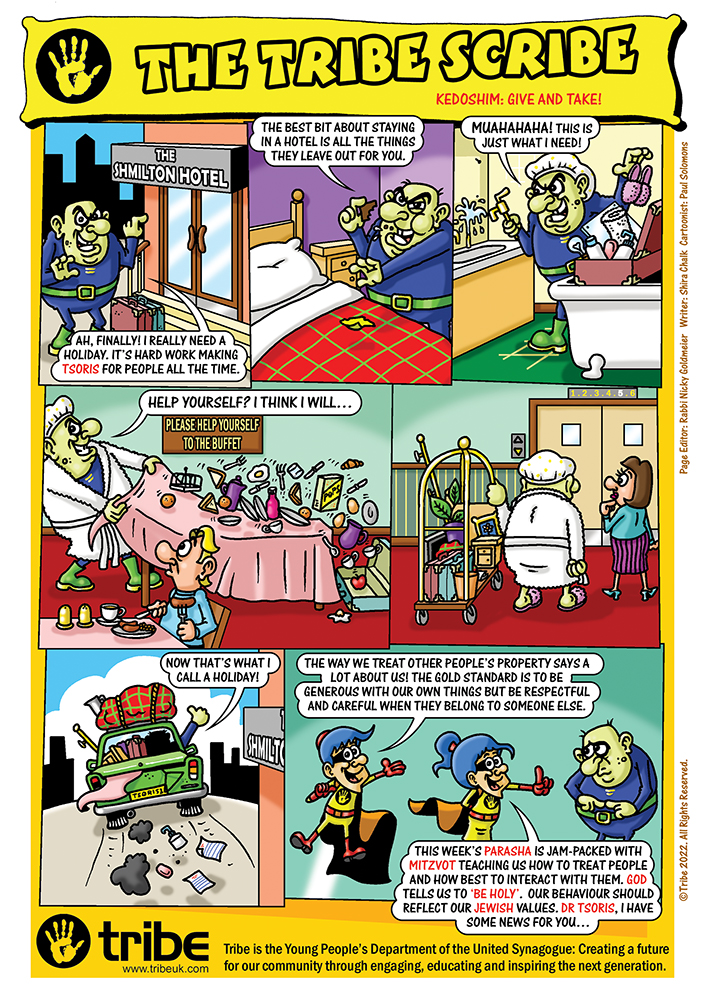Bonjour / Hello [nickname_else_first_name],
Table of contents
1) Perashat Hashavoua - Rabbi Eli Mansour
2) Halakhat Hashavoua (Halakhot related to day to day life) - Hazzan David Azerad
- Halachot Lag B'Omer
3) Holy Jokes!
Pesach Sheni (Hebrew: פסח שני, trans. Second Passover) occurs every year on 14 Iyar. This is exactly one month after 14 Nisan, the day before Passover, which was the day prescribed for bringing the Korban Pesach ("Paschal offering", i.e. Passover lamb) in anticipation of that holiday.[2] As described in the source text for this mitzvah (Numbers 9:1–14), the Israelites were about to celebrate Passover one year after leaving Egypt.
The offering of the Korban Pesach was at the core of that celebration. However "certain men"[3] were ritually impure from contact with human corpses, and were therefore ineligible to participate in the Korban Pesach. Faced with the conflict of the requirement to participate in the Korban Pesach and their ineligibility due to impurity, they approached Moses and Aaron for instructions, which resulted in the communication of the law of Pesach Sheni.[4]
-Wikipedia
Lag BaOmer (Hebrew: לַ״ג בָּעוֹמֶר, LaG Bāʿōmer), also Lag B'Omer or Lag LaOmer, is a Jewish religious holiday celebrated on the 33rd day of the Counting of the Omer, which occurs on the 18th day of the Hebrew month of Iyar.
According to some Rishonim, it is the day on which the plague that killed Rabbi Akiva's 24,000 disciples came to an end, and for this reason the mourning period of Sefirat HaOmer concludes on Lag BaOmer in many communities.
According to modern kabbalistic tradition, this day is the Celebration of Simeon ben Yochai and/or the anniversary of his death. According to a late medieval tradition, Simeon ben Yochai is buried in Meron, and this association has spawned several well-known customs and practices on Lag BaOmer, including the lighting of bonfires and pilgrimages to Meron.[3]
Additionally, in modern-day Israel, the holiday also serves to commemorate the Bar Kokhba Revolt against the Romans.[4]
-Wikipedia
1)PERASHAT HASHAVOUA
This Week's Parasha Insight with Rabbi Eli Mansour
Parashat Emor- Keter Shem Tob 'The Crown of Good Reputation'
Rabbi Shimon and the "Keter Shem Tob"
Rabbi Shimon Bar Yohai teaches us in Pirkeh Abot (4:13), "There are three crowns: the crown of Torah, the crown of Kehuna, and the crown of kingship. But the crown of a good reputation exceeds them."
What exactly is meant by the expression "Keter Shem Tob" ("the crown of a good reputation"), and in what way does it "exceed" the other three crowns?
One simple explanation is that Rabbi Shimon here does not speak of the "Keter Shem Tob" as the fourth crown, but rather as a necessary prerequisite for the three crowns. Torah scholarship, the work of the Kohanim, and the rule of the king have no value if the scholar, Kohen or king does not conduct himself properly. If he acts dishonestly, inappropriately, or discourteously, in a manner which people find distasteful, such that he is unlikeable, then he cannot effectively serve the role that he is supposed to serve. According to this reading of the Mishna, Rabbi Shimon is teaching us that a scholar, or a person holding an important leadership position, must conduct himself with proper Middot (character traits) in order for his scholarship or his position to be meaningful.
There might, however, be an additional understanding.
The three "crowns" of Torah scholarship, the Kehuna and the kingship are alluded to in the Bet Ha’mikdash, which included three furnishings that featured a "Zer," a decoration resembling a crown: the Aron (ark), the Mizbe’ah (altar), and the Shulhan (table). The Aron contained the original Sefer Torah, and thus symbolizes Torah; the altar, where the Kohanim offered the sacrifices, represents the Kehuna; and the gold-plated Shulhan, which contained bread, signifies the wealth and prestige of royalty. The "crowns" that adorned these furnishings represent the three "crowns" of scholarship, Kehuna and kingship.
The question, then, arises, where is the "Keter Shem Tob" alluded to in the Bet Ha’mikdash? If the other three "crowns" have allusions in the Bet Ha’mikdash, then we would naturally expect that the greatest of all the crowns, the "Keter Shem Tov," would also have an allusion.
The answer might be that the "Keter Shem Tob" is symbolized by the Menorah, which the Torah discusses in this week’s Parasha, Parashat Emor. Although the Menorah did not feature a "Zer," it had a series of lamps that stood at its top, which were kindled and thus provided light. The lamps were the "crown" of the Menorah. The Torah describes the kindling of the Menorah with the term "Le’ha’alot" (Vayikra 24:2), and Rabbi Shimon similarly says about a good reputation, "Oleh Al Gabehem" (literally, "rises above them"). Rabbi Shimon is teaching us that the "Keter Shem Tob," a good reputation, shines like the Menorah. It is "Oleh" – just like the lamps of the Menorah are kindled ("Le’ha’alot"). Even in English, we use the expression "shining example," referring to the way a person who conducts himself properly sets an example that "shines," that illuminates the world around him. A person who earns a "Shem Tob," a good reputation, through his upstanding conduct illuminates his surroundings, having an impact upon the people around him who look up to him, admire him, and learn from his example.
King Shlomo teaches in Kohelet (7:1), "Tob Shem Mi’shemen Tob" – a good reputation is better than "good oil." A good reputation shines even brighter than the lights of the Menorah that are kindled with oil. When we conduct ourselves properly, earning a favorable reputation among our peers, then we are able to illuminate our surroundings and uplift the people we come in contact with. This is the unique power of the "Keter Shem Tob" – the ability to positively influence our surroundings and have an impact on other people.
2) HALAKHAT HASHAVOUA
Halakhot selected and translated by Hazzan David Azerad
Hilchot Lag Ba'omer from Peninei Halacha
It is customary to rejoice to some extent on Lag Ba'omer. Even though we observe some customs of mourning during the Omer period, one is, nevertheless, permitted to sing and dance on Lag Ba'omer. Furthermore, one does not recite the Tachanun (supplication) on that day, nor does one recite it in the Mincha service of the previous day. In addition, one is not allowed to fast on Lag Ba’omer.One of the reasons we rejoice on Lag Ba’omer is that the plague stopped and the students of Rabbi Akiva stopped dying on the thirty-third day of the Omer. Another reason for rejoicing on Lag Ba'omer is that it is the anniversary of the death (hillula) of the holy Tana, R. Shimon bar Yochai, who was R. Akiva’s disciple.
Customs of mourning and rejoicing that pertain to Lag Ba’omer.
According to all customs, one may sing, dance, and play musical instruments from the beginning until the end of Lag Ba'omer. Regarding weddings and haircuts [the matter depends on one’s custom]. Ashkenazim and some Sefardic communities allow weddings and haircuts during the day of Lag Ba’omer, and some allow them even during the night. Most Sefardim, however, refrain from weddings and haircuts on Lag Ba’omer until the following day on the 34th day of the Omer. Nonetheless, when Lag Ba’omer falls on Friday, one may take a haircut in honor of Shabbat, even according to Sefardic custom . Those who follow the customs of the Ari z”l do not cut their hair on Lag Ba’omer [even in this situation], because they refrain from haircuts throughout the Omer period, until the day before Shavuot .
Bevirkat Shabbat Shalom Umevorach
David Azerad
3) HOLY JoKeS!!
Selection of funny snippets, loosely related to this weeks parashah or current events, to brighten your day














